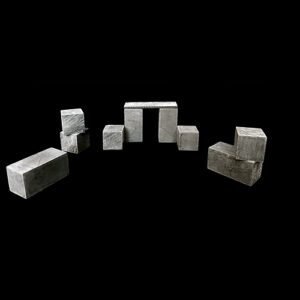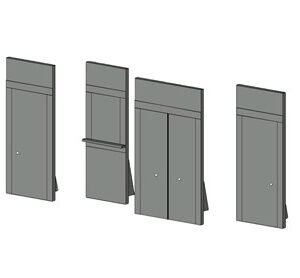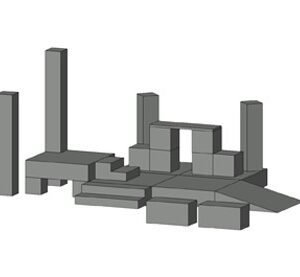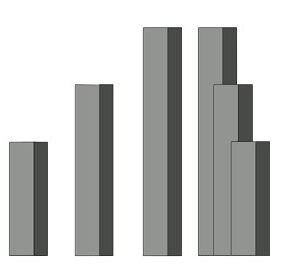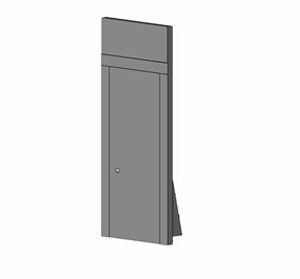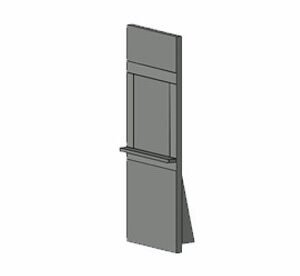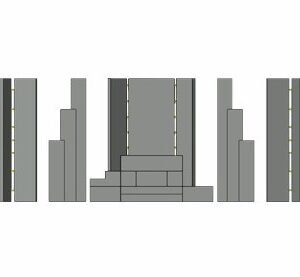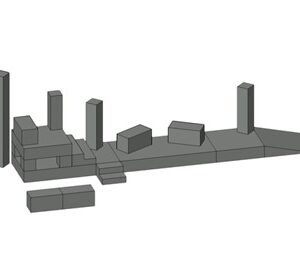Scale Model Theater Sets
Scale Model Theater Sets is an actual theater stage that is a small version of it. Such scale models are proportionally made so they turn out to be smaller versions of the actual setting. While creating a scale model theater set, one needs to look into every minute detail like the size and position, furniture, stage props, backdrops, and even lighting fixtures. They help the director, set designer, or any production team members who need to decide what the final stage should look like and how it should work.
UIL Scale Model Units
The UIL Scale Model Units are guidelines and requirements that the University Interscholastic League has about the creation of scale model theatre sets for competitions or events. They usually set out rules and regulations concerning scale, measurement, matter, and any other kind of presentation used in the scale model theater sets. UIL Single Units are the individual pieces that allow other units to couple with them, making for a much larger set and cohesive design. These units play a very big role in showing off the participants’ skills and vision within the bounds of the competition guidelines.
Theater Production Scale Models are one of the simplest, yet most essential, development tools for envisioning stage designs and sets within a production. They are small replicas of the theatre or any scenery and props that would go into the play but on a small scale. They therefore serve when deciding on lighting blocking and general arrangements on stage to ensure an integrated and beautiful production at the end.
TAPPS Scale Model Props
TAPPS Scale Model Props are the guidelines and specifications presented by the Texas Association of Private and Parochial Schools on what to make for props to scale model theater settings for their functions. This would include rules on the size and design of props, materials used, and how they’re presented on the scale models.
TAPPS scale model props have been made from almost any material that one could imagine from balsa wood to foam board, cardboard, paper, fabric, plastic, and miniature settings and equipment. More often than not, materials will be selected for the ease by which they can be manipulated into complex patterns realistic enough to be used in a scale model theater environment. These materials can be mixed by designers and artists to animate their scale model props, thereby creating the best presentation for their projects. Getting in touch with local theater groups or prop-making companies that have vast experience providing quality, custom-made props for numerous theater competitions is the best means to get the best TAPPS scale model props at affordable prices. We can provide you with TAPPS-compliant, high-quality props at a budget-sensitive level. You may canvas from different sources for recommendations and quotations to ensure that you are getting the best price.
UIL Theater Sets are there to reflect creativity, technical skills, and knowledge of theatrical production elements by participants within the UlL set by the competition. A significant use of UIL theater sets would be in considering participants based on how well they can interpret and implement an effective design concept.
Florida Junior Scale Models
Florida Junior Scale Models is a segment of Florida Junior Thespian, which involves the construction of scale models by students that represent a theater set. Judging for these scale models is usually based on their accuracy, creativity, and craftsmanship. They typically help students do scale models using balsa wood, cardboard, foam board, fabric, and other craft materials. Theater Scale Model Kits refer to sets that include all the materials and instructions for making a miniature set in a theater. Such kits can help any person, from students competing in competitions like Florida Junior Scale Models or TAPPS scale model props, to create a scale model detailed and realistic enough for a theater setting. Generally, scale model kits for theaters have pre-cut wooden, plastic, or similar material pieces with a set number representing the set elements, together with miniature accessories and step-by-step instructions for assembly by the community. They can be used as simple, yet effective tools to make fantastic scale models for any other reason.
Educational Scale Models for Theater
These scale models are very beneficial tools in the learning process, underlining set design, stagecraft, and, more correctly, all produce. The scale models let students design a theater set on a smaller scale and plan it before making a full-scale set. These models let students get a feel for the real spatial relationship, play with different elements of design, and be creative and solve problems. They are also used in drama classes, theater programs, and competitions to involve students in hands-on learning about the theatrical arts. In case you have budget constraints for making an educational scale model of theaters, you can turn to DIY, buy already-made scale models that will not hurt your wallet, or log in to online marketplaces or education supply stores.
High School Theater Scale Models are an integral part of many theater programs and competitions at the high school level. Normally, high school theater scale models are designed by students using such varied materials as foam board, cardboard, and other craft materials. At the bottom line, these projects try to explore set design with spatial relationships and practically visualize the entire production process.
Modular Scale Model Units
Modular Scale Model Units refer to those self-contained subcomponents or sections that, when combined or rearranged, give rise to a larger, usually more complex, arrangement in a scale model. With modular scale model units, the designer can easily try out different arrangements, additions, and removals of components, and customize the model for special requirements or preferences. This method offers the best and most convenient way to create and manipulate scale models with uniformity and overall cohesion.
Custom Handcrafted Stage Items are specially handcrafted stage items made for a stage show. These are handmade pieces produced with much care and better anticipation of what could work well for a specific show. These can be in the form of props, set pieces, costumes, or other elements that need a touch of customization. Handmade stage props infuse an element of talent, authenticity, and feel into a performance by which the production comes alive on stage.

